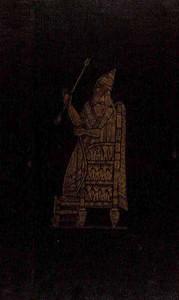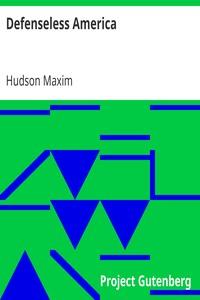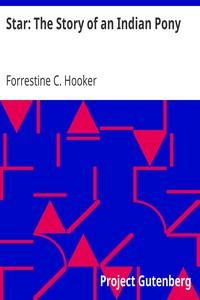|
|
Read this ebook for free! No credit card needed, absolutely nothing to pay.Words: 65887 in 26 pages
This is an ebook sharing website. You can read the uploaded ebooks for free here. No credit cards needed, nothing to pay. If you want to own a digital copy of the ebook, or want to read offline with your favorite ebook-reader, then you can choose to buy and download the ebook.

: Discoveries Among the Ruins of Nineveh and Babylon by Layard Austen Henry - Middle East Description and travel; Scientific expeditions; Nineveh (Extinct city); Babylon (Extinct city)@FreeBooksWed 07 Jun, 2023 rrent washed away in a night the fruits of a month's toil. The Pasha had summoned to his aid all the tribes that still owned his authority; his tents were crowded with Arab Sheikhs from the plains, and Kurdish Beys from the mountains. About two thousand regular troops and a large body of irregular horse and foot completed the motley army he had gathered round him at the Hindiyah. I spent the following day with Abde Pasha, who was an ardent sportsman, and entertained me with hawking. The Arab and Kurdish chiefs, who were in his camp, were summoned at dawn to accompany him. We formed altogether a very gay and goodly company. Bustards, hares, gazelles, francolins, and several wild animals abounded in the jungle and the plains, and before we returned in the afternoon scarcely a horseman was without some trophy of the chase dangling from his saddle. The bird usually hawked by the Arabs is the middle-sized bustard, or houbara. It is almost always captured on the ground, and defends itself vigorously with wings and beak against its assailant, which is often disabled in the encounter. The falcon is generally trained to this quarry with a fowl. The method pursued is very simple. It is first taught to take its raw meat from a man, or from the ground, the distance being daily increased by the falconer. When the habit is acquired, the flesh is tied to the back of a fowl; the falcon will at once seize its usual food, and receives also the liver of the fowl, which is immediately killed. A bustard is then, if possible, captured alive, and used in the same way. In a few days the training is complete, and the hawk may be flown at any large bird on the ground. The falconry, however, in which Easterns take most delight, is that of the gazelle. For this very noble and exciting sport, the falcon and greyhound must be trained to hunt together by a process unfortunately somewhat cruel. In the first place, the bird is taught to eat its daily ration of raw meat fastened on the stuffed head of a gazelle. The next step is to accustom it to look for its food between the horns of a tame gazelle. The distance between the animal and the falconer is daily increased, until the hawk will seek its meat when about half a mile off. A greyhound is now loosed upon the gazelle, the falcon being flown at the same. When the animal is seized, which of course soon takes place, its throat is cut, and the hawk is fed with a part of its flesh. After thus sacrificing three gazelles, the education of the falcon and greyhound is declared to be complete. The chief art in training is to teach the two to single out the same gazelle, and the dog not to injure the falcon when struggling on the ground with the quarry. The greyhound, however, soon learns to watch the movements of its companion, without whose assistance it could not capture its prey. The falcon, when loosed from its jesses, flies steadily and near the ground towards the retreating gazelles, and marking one, soon separates it from the herd. It then darts at the head of the affrighted animal, throws it to the ground, or only checks it in its rapid course. The greyhound rarely comes up before the blow has been more than once repeated. The falconer then hastens to secure the quarry. Should the dog not succeed in capturing the gazelle after it has been struck for the third or fourth time, the hawk will generally sulk and refuse to hunt any longer. I once saw a very powerful falcon belonging to Abde Pasha hold a gazelle until the horsemen succeeded in spearing the animal. The fleetness of the gazelle is so great, that, without the aid of the hawk, very few dogs can overtake it, unless the ground be heavy after rain. The pursuit of the gazelle with the falcon and hound over the boundless plains of Assyria and Babylonia is one of the most exhilarating and graceful of sports, displaying equally the noble qualities of the horse, the dog, and the bird. The time of day best suited for hawking is very early in the morning, before the eagles and kites are soaring in the sky. The falcon should not be fed for several hours before it is taken to the chase. When not hunting, the Arabs give it meat only once a day. Some hawks require to be hooded, such as the Chark and the Shaheen; others need no covering for the eyes. The hood is generally made of colored leather, with eyes worked on it in beads, and gold and variegated threads. Tassels and ornaments of various kinds are added, and the great chiefs frequently adorn a favourite bird with pearls and precious stones. To the legs are sometimes fastened small bells. Few hawks will return to the falconer without the lure, which consists of the wing of a bustard or fowl, or of a piece of meat attached to a string, and swung round in the air. The Eastern huntsman has a different call for each variety of falcon. A good chark will sometimes take as many as eight or ten bustards or five or six gazelles in the course of a morning. I have introduced these remarks on falconry, founded on personal experience, as this noble science is probably of the greatest antiquity, and is still the favorite pursuit of the Eastern warrior. Before leaving the camp I obtained letters to the principal chiefs of the southern tribes from the Pasha as well as from Wadi, the Sheikh of the Zobeide, and other influential Sheikhs. After riding about four hours we perceived a huge hill to the south. As we drew nearer, its flat table-like top and perpendicular sides, rising abruptly from an alluvial plain, showed that it was the work of man, and not a natural elevation. At length we could plainly distinguish around it great embankments, the remains of walls and canals. Gradually, as the caravan slowly advanced, the ruin assumed a definite shape. It was the mound of Babel, better known to travellers as the Mujelib?, a name not now given to it by the Arab inhabitants of the surrounding country. This is the first great ruin seen on approaching ancient Babylon from the north. Beyond it long lines of palms hem in the Euphrates, which now winds through the midst of the ancient city. To the vast mound of Babel succeed long undulating heaps of earth, bricks, and pottery. A solitary mass of brickwork, rising from the summit of the largest mound, marks the remains known to the Arabs as the "Mujelib?," or the "overturned." Other shapeless heaps of rubbish cover for many an acre the face of the land. On all sides, fragments of glass, marble, pottery, and inscribed brick are mingled with that peculiar nitrous and blanched soil, which, bred from the remains of ancient habitations, checks or destroys vegetation, and renders the site of Babylon a naked and hideous waste. Owls start from the scanty thickets, and the foul jackal skulks through the furrows. Truly "the glory of kingdoms and the beauty of the Chaldees' excellency is as when God overthrew Sodom and Gomorrah. Wild beasts of the desert lie there; and their houses are full of doleful creatures; and owls dwell there, and satyrs dance there. And the wild beasts of the islands cry in their desolate houses, and dragons in their pleasant palaces," for her day has come. A few black tents and flocks of sheep and camels were scattered over the yellow plain. They belonged chiefly to the Zobeide, an ancient tribe, renowned in the history of the conquering Arabs under their first caliphs, and now pasturing their flocks in the wilds of Babylonia. From Amran, the last of the great mounds, a broad and well-trodden track winds through thick groves of palms. About an hour's ride beneath a pleasant shade brings the traveller to the falling gateway of the town of Hillah. A mean bazar, crowded with Arabs, camels, and asses, leads to a bridge of boats across the Euphrates. The principal part of the town, containing the fort and the residence of the governor, is on the opposite side of the river. We turned off, however, to the left, as our quarters had been made ready on the western bank. A party of irregular troops sent out to meet me, conducted my caravan to a spacious house standing on the very edge of the stream, and belonging to one of the principal families of the place. It had once contained rich furniture, and handsomely decorated rooms in the Persian style, but was now fast falling into utter ruin. The cold wind whistled through the rotten wooden panels of the windows, for there was no glass, and the crumbling ceiling and floor threatened to give way together. In this frail dwelling we prepared to pass a part of our winter in Babylonia. Free books android app tbrJar TBR JAR Read Free books online gutenberg More posts by @FreeBooks
: Roman Sepulchral Inscriptions Their Relation to Archæology Language and Religion by Kenrick John - Epitaphs Rome; Inscriptions Latin@FreeBooksWed 07 Jun, 2023
|
Terms of Use Stock Market News! © gutenberg.org.in2025 All Rights reserved.






